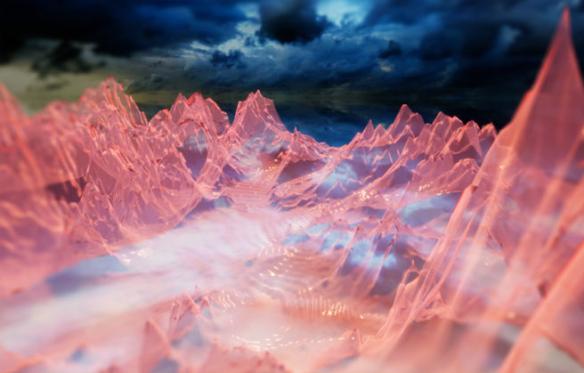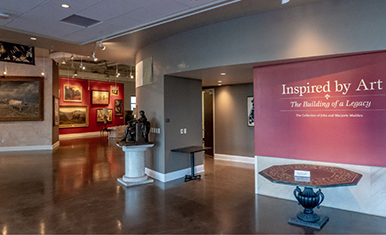DU alumna pushes boundaries of digital art

This article appears in the summer issue of University of Denver Magazine. Visit the magazine website for bonus content and to read this and other articles in their original format.
Fusing digital art with elements of nature, University of Denver alumna Cherish Marquez (MFA ’20) departs dramatically from traditional exhibitions, creating spaces for audiences to interact with her artwork.
Marquez, a resident artist at Denver’s Redline Contemporary Art Center, explores environmental destruction, ancestry and culture, history and personal identity through dynamic creations.
Her most recent solo exhibition, “Voices of the Desert,” explored environmental destruction and justice, driven by Marquez’s personal connection to the land where she grew up. Her audience was invited to not only view, but to physically interact and manipulate the real and virtual environments using touch-sensitive topographical maps as video game controllers, augmented-reality Instagram filters and a selection of dried desert plants.
Her work also was included in “In Sickness and In Health,” an exhibition at Denver’s McNichols Civic Center Building examining disability and illness in marriage through critical feminist and queer lenses.
The native Texan came to DU by way of Las Cruces, New Mexico, where she earned a degree in fine arts and creative writing from New Mexico State University. She then attended the University of Denver and earned an MFA in emergent digital practices. Her love for creating art began long before college, however.
“My dad, he used to draw a lot. When I was about 4 or 5, I remember going into his office and looking through his stuff and finding all his drawings and things. I used to really look up to him, and I wanted to be, you know, just like him,” she says. “So I started doing art from a pretty young age.”
Marquez says she’s always avoided following others’ footsteps too closely. “I tried it, [but] drawing was really never my thing.”
Breathtaking nature scenes on the covers of National Geographic inspired her to take up photography and document the world around her. Snapping photos of people—primarily her sisters—unveiled an intimate relationship connecting the photographer, camera and subject that drew Marquez into the medium.
“It was a kind of window into their life and almost a time capsule too,” she says. While struggling to find subjects to photograph in college, Marquez turned the camera on herself. Photography, more than ever, offered a fruitful opportunity for self-expression and exploration.
“I felt like I could have all these, you know, different characters and different personalities,” she says. “I think at that time when I was 18 to 20, it just kind of felt like I needed to do that. Identity stuff is really weird when you’re at that age.”
After earning her bachelor’s degree, Marquez wanted to dive deeper into digital art, but she also sought an escape from her small-town upbringing. DU’s graduate program offered her city life as well as opportunities to expand her coding, 3D modeling, video-game design and graphic design skills.
Though the fast pace of the quarter system was challenging, Marquez fondly remembers the bonds she built with faculty and students in the Shwayder Art Building. “The community there—the fellow students, the cohort and even the teachers were really supportive, and they definitely mentored me a lot and still do,” she says.




